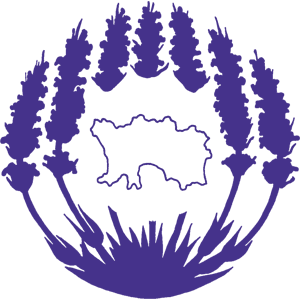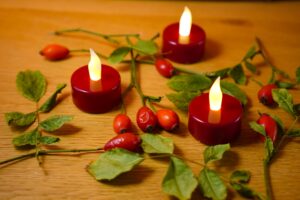“Lavender” is part of the broad botanical genus – Lavandula. This is thought to be made up of 50 different species, and within some of these species are perhaps hundreds of different cultivars/varieties.
For the purposes of lavender oil we are mainly concerned with two species –lavandula angustifolia (sometimes called English lavender or true lavender), and lavandula x intermedia (Lavandin). I’ll come back to these in a paragraph or two.
Other Lavender species: An oil is also produced commercially from lavandula latifolia (Spike or Spanish lavender), but not at Jersey Lavender. Spike lavender is widely available within the essential oils industry and is used in perfumery. It has a pungent lavendery-eucalyptus-like fragrance.
There are other species such as lavandula stoechas (French lavender, butterfly lavender), Lavandula dentata (Toothed lavender) and lavandula viridis (Yellow or Green lavender) which certainly do produce an oil when steam distilled, but generally speaking they are not grown commercially so the oils are not produced in any quantity. I have come across a lavandula stochas oil in Portugal as a local herbal remedy, and some work was done on the benefits of lavandula viridis oil on toe-nail fungal infections in 2011, and I was once asked to distill some Lavandula Dentata oil for cancer research.
So back to our main lavender oil producing plants. Within each of the species there are many varieties. Lavender farmers around the world will argue about which ones produce the best oil. At Jersey Lavender we grow five varieties of L. angustifolia and one of lavandin.
Lavender v. Lavandin:
Although the oil of lavandula angustifolia (I’ll refer to this as just “lavender” from now on) is more highly prized and expensive than that of lavandin, in fact far more of the lavandin oil is produced in the world. The main reason is because lavendin has a much higher oil yield and flowers more profusely so that, even with lower prices, farmers make more money per field area. The other reason is that the demand for lavandin oil is much greater as it is used commercially in cheaper, high volume fragrances (laundry detergents, soaps etc). Lavender oil, on the other hand, is used in higher-priced, lower volume fragrances for products such as perfumes, cosmetics, skin creams and top quality bath products – including our own Jersey Lavender products!
If you compare the smell of lavender and lavandin the difference is very noticeable. Most of the different chemicals (up to 120 of them) in the two oils are pretty similar, however, one key difference is a chemical called Camphor. Camphor has a harsh, sharp, strongly pungent fragrance (almost reminiscent of a cold remedy!). In lavender the camphor should be between zero and 0.6%; in lavandin it is between 6% and 9%.
Within each species of lavender there are many different varieties. So it is no surprise that the oils derived from each of these varieties are different. Which oil is “best” is largely a matter of personal opinion, but each particular variety does seem to produce consistent patterns of different chemical components which lead to a consistency in their odour and therefore make them distinguishable from other varieties.
Added to the oil differences that the species and varieties produce, there are other variables such as soil type, nutrition, water, sunlight, temperature, age of plant, time of harvesting in the flowering season etc. – all of which affect the oil, some to a greater extent than others.
Where in the World?: Most lavender species used for oil production are indigenous to the Mediterranean region. Provence in the south of France is the “home” of lavender oil production, but now it is grown (and the oil extracted) in many areas further afield. There are bigger farms producing oil for the commodity essential oil markets in Bulgaria, Ukraine, Yugoslavia, Czech Republic, southern Russia, Australia, China, the USA, and lately in Northern India. Smaller farms such as Jersey Lavender are found, with new ones starting up all the time, in the UK, Australia, New Zealand, Canada, USA, South Africa and South America.





